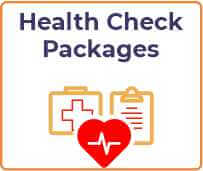What is the Lipid Profile Test?
The lipid profile test measures cholesterol and triglyceride levels in the blood. Also known as a complete cholesterol test, lipid test, and lipid panel test, it detects the risk of artery blockages, which can lead to conditions like atherosclerosis and heart disease. High cholesterol levels are associated with a greater risk of cardiovascular problems, making this a common test ordered by healthcare providers for monitoring.
What is the Lipid Profile Test used for?
A Lipid Profile Test is used to measure levels of low-density lipoprotein (LDL), high-density lipoprotein (HDL), triglycerides, and total cholesterol in the blood. It’s a valuable tool to identify an individual’s risk of heart disease, heart attacks, and other cardiovascular conditions. The results help healthcare providers in managing heart health and making appropriate lifestyle and treatment recommendations.
How should one go about interpreting the lipid profile test report?
When interpreting the lipid profile test report, it’s important to consider the levels of HDL, LDL, triglycerides, and total cholesterol. For proper lipid profile interpretation, it’s advisable to consult your healthcare provider.
The normal range or Normal values for each component of the lipid profile test is as follows:
|
Lipid Profile Component |
Normal Range |
|
LDL (Low-Density Lipoprotein) |
Below 100 mg/dL |
|
HDL (High-Density Lipoprotein) – Males |
Above 60 mg/dL |
|
HDL (High-Density Lipoprotein) – Females |
Above 50 mg/dL |
|
Triglycerides – Males |
Below 100 mg/dL |
|
Triglycerides – Females |
Below 150 mg/dL |
|
Total Cholesterol |
Below 200 mg/dL |
Elevated LDL levels exceeding 190 mg/dL, low HDL levels below these thresholds, total cholesterol levels exceeding 240 mg/dL, and triglycerides in the range of 200-500 mg/dL all indicate a high risk of heart disease.
Frequently Asked Questions:
Why lipid profile test is done?
A lipid profile test is recommended for individuals with cardiovascular diseases, diabetes, high cholesterol, obesity, kidney diseases, polycystic ovary disease, those taking cholesterol-lowering medications, older individuals, and those with lifestyle factors like smoking and alcohol consumption. Regular testing is necessary for early diagnosis and management of high lipid levels since they might occur without any symptoms.What is the Lipid Profile Blood Test Procedure?
The blood sample is collected from the patient's veins in the upper arms into a test tube or vial using a small needle and then analyzed in the laboratory. The sample collection for the blood test only lasts for only a few minutes.Can a lipid profile detect blockage?
The lipid panel test detects the risk of developing heart diseases such as atherosclerosis which is associated with the hardening, narrowing, and blockage of the heart arteries.What happens if the lipid profile is high?
When the lipid profile is high, it typically means elevated levels of cholesterol and triglycerides. This condition increases the risk of cardiovascular diseases, including stroke, coronary artery disease, high blood pressure, type 2 diabetes, and peripheral artery disease. For lowering these health risks, managing high lipid levels by lifestyle adjustments and, if required, medication, is essential.What foods cause high lipids?
Foods high in lipids include poultry skin, beef fat, butter, heavy cream, potato chips, soft cheese, buttered popcorn, pork, lamb, palm kernel oil, coconut oil, packaged cookies, and bacon.how to control a high lipid profile?
High lipid profiles can be managed through a multifaceted approach. Medication therapy, dietary adjustments, and lifestyle changes are effective strategies. These include weight management, reducing dietary fat intake, regular exercise, and smoking cessation if applicable. Statins are commonly prescribed medications for lipid disorders, but a healthcare professional will decide the best course of action depending on each patient's unique requirements.What are the symptoms of high lipids?
High lipid levels, particularly high cholesterol, often don't present noticeable symptoms. In some cases, visible signs like white rings around the cornea, yellowish skin bumps, or yellowish lumps near the eyes can occur. However, the most severe consequences of high lipids, like atherosclerosis and heart disease, typically manifest as chest pain or, in severe cases, heart attacks. Regular cholesterol screenings are essential for early detection and management.Is Fasting required before Lipid Profile Test?
Yes, fasting is typically required before a lipid profile test. It is recommended to fast for at least 9-12 hours before the test to obtain accurate results. Fasting makes sure that recent food eaten doesn't considerably affect your blood lipid levels. During this fasting period, you can drink water, but you should avoid consuming any food, beverages, or medications. However, it's essential to follow your healthcare provider's specific instructions for fasting before the test, as requirements may vary.,Why a lipid profile test is done in fasting?
The fasting requirement in a lipid profile test preparation makes a significant difference in its accuracy compared to a nonfasting lipid profile. Fasting prevents recently eaten food from impacting cholesterol and triglyceride levels. These levels can briefly increase in a nonfasting profile, which might result in interpretation errors. Therefore, fasting before the test is crucial for obtaining reliable data and assessing cardiovascular risk factors accurately.What does the lipid profile test include?
A lipid profile test assesses various components in the blood related to cholesterol and triglycerides. It typically includes measurements of total cholesterol, low-density lipoprotein (LDL) cholesterol (considered "bad" cholesterol), high-density lipoprotein (HDL) cholesterol ("good" cholesterol), and triglycerides. This test helps evaluate cardiovascular health and the risk of heart disease, making it a crucial part of routine check-ups, especially for individuals with heart disease risk factors.Why Choose Yashoda Hospitals
Yashoda Hospitals is committed to providing world-class treatment for patients from across the globe. With the unique combination of state-of-the-art technology, intuitive care, and clinical excellence, we are the healthcare destination for thousands of international patients in India.

On the journey to good health, we understand that it is important for you to feel at home. We plan out all aspects of your trip.

Experienced specialists perform non-invasive and minimally invasive surgeries to provide the best treatment for international patients.

Our hospitals are equipped with advanced technology to perform a wide range of procedures and treatments.

We deliver excellence by delivering quick and efficient healthcare and through pioneering research that helps all our future.patients.










